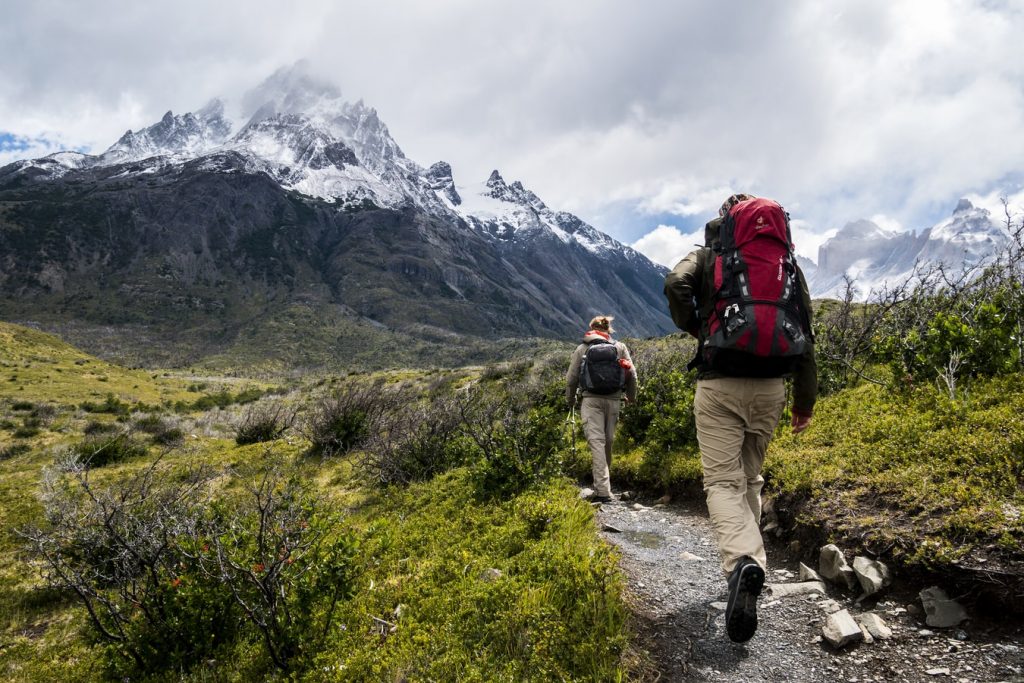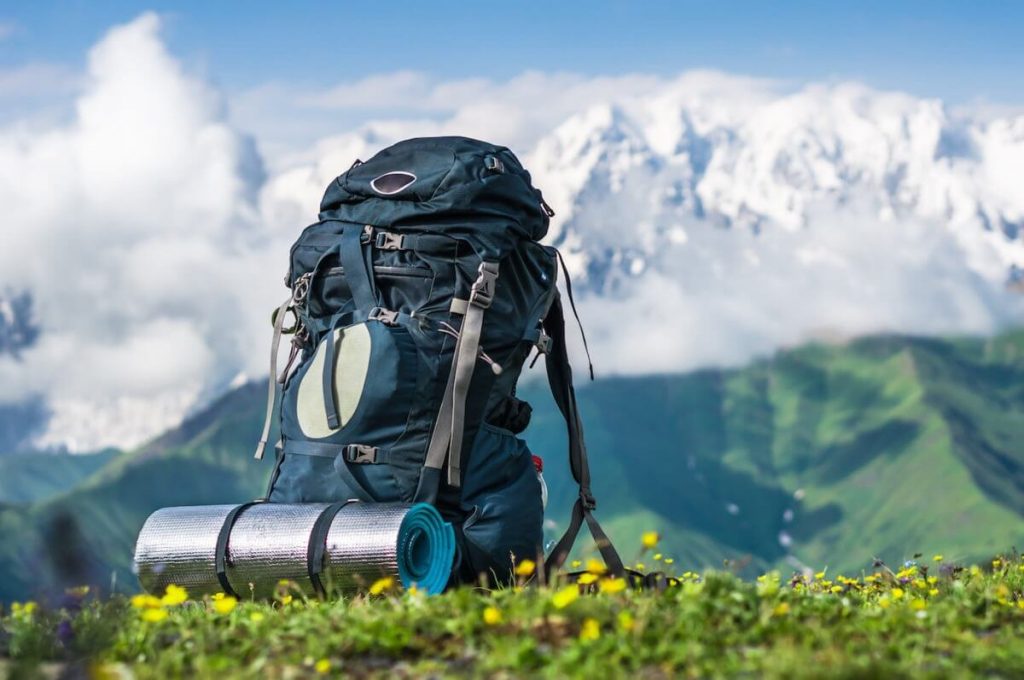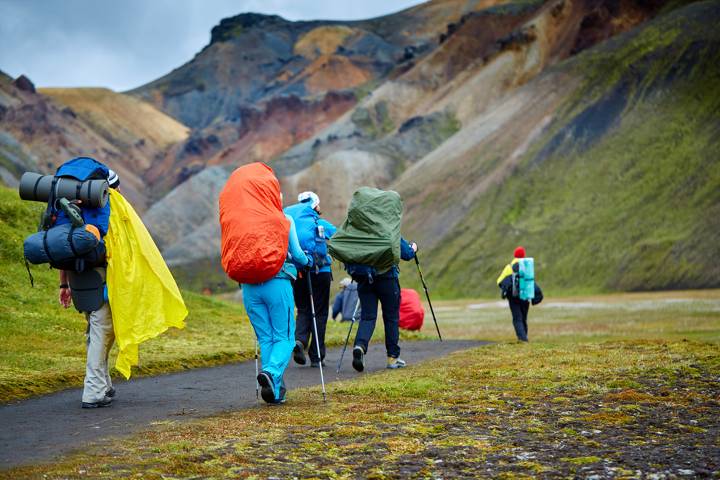There is nothing quite like slinging a backpack over your shoulders before setting out on foot for a long journey.
Frodo Baggins and Samwise Gamgee hung pots, swords, even the One Ring itself for a trek of hundreds of miles across the wildlands of Middle Earth. Harry Potter’s magical satchel and the Luggage from Terry Pratchet’s Discword series wielded the ability to contain an infinite number of items.
If literature teaches us anything about the art of the adventure, it is the absolute necessity of the backpack.
Factors when choosing the best backpack for hiking

Selecting the best backpack for hiking trips could mean the difference between having an excellent time and throwing in the towel after just a mile in. Whether you are planning for a daylong hiking trip with your family, or you are prepared for a months-long journey alone across the Appalachian trail itself, the decision of which backpack you choose is absolutely crucial.
The first part of the process is figuring out several factors:
Size
How large do you need your backpack to be? As in, what is the capacity, how much will you be required to fit, inside of your backpack?
This will depend on how long you plan to hike for, the activities you plan to partake in during the hike (will you be climbing, or fishing, or hunting?), and the climate conditions in which you plan to have your adventure.
The most common mistake for hikers to make is first selecting their backpack and then attempting to fit their gear inside of it and adjusting their supplies to accommodate the backpack. You should first gather your supplies, check their total weight and volume, and then select the best backpack for hiking based on the gear that you will be taking with you.
How to choose the optimum volume
| Length of Hike | Capacity |
| 1 day hike | 15-30 liters |
| 1 or 2 nights | 30-50 liters |
| Weekend | 45-55 liters |
| 3 to 4 nights | 55-70 liters |
| More than 5 nights | More than 70 liters |
If winter is coming, you should choose a larger backpack than you might normally select, due to the added supplies such as blankets and insulation to your load.
Choosing the Correct Suspension
The suspension is important for your comfort while hiking. Nothing else can ruin a perfectly good day of hiking than an ache in your back or soreness around your waist. If you choose the best suspension for your backpack, you can avoid future discomfort and make your trip the best possible.
Shoulder straps
Your shoulder straps should curve smoothly and comfortably, forming to match the shape of your body. Thick pads are not necessary, since most of the pressure will be put on your hips, but they should feel good to wear and should not scrape your shoulders and back.
Be sure your pack has a sternum strap, which is located over the center of your chest and links the two shoulder straps so that the pack remains stable.
Hip belt
A hip belt is an absolute must when carrying heavy loads. Most of the weight you are carrying, up to 80 percent, should be exerted onto the hip belt. These need to fit snug, but not too tightly, around the hip bone in order to support the weight properly.
Compartments

Backpacks, especially those purposed for hiking, offer a diverse assortment of storage compartments, sleeves and pockets in their design.
Every standard hiking backpack will generally come with a single large, main compartment, along with several smaller compartments located behind it and also on the sides.
The best hiking backpacks will come with (1) a compartment designed solely for a sleeping bag, (2) a top lid, for keeping rain from entering the central compartment, (3) front pockets, which should have a zipper and allows you to carry a coat if you are not wearing it, (4) side pockets, which can be used to hold water bottles or poles for your tent, and (5) hip belt pockets, which are optimal for small items such as a compass or a pocket knife.
Ventilation
It might sound odd, but it’s true — your back needs to breathe. The best hiking backpack will be designed with back panel ventilation, in order to reduce sweat and keep your back from overheating and becoming itchy.
Rain Cover

If an aching back is the worst way to ruin a hiking trip, your most vital supplies becoming soaked must be the runner-up.
Backpacks are not usually waterproof. Water can escape between the seams and ruin whatever electronics, clothes, or metallic objects you have stored inside. It should go without saying, but be sure that you measure your rain cover and make sure that it is the proper size to cover your entire backpack.
Hydration Capability
Water in the wrong places will dampen the fun of a camping trip, but not enough water could be even worse.
The best hiking backpack will have a pouch reserved exclusively for containing water, as well as equipped with a tube for drinking. Medical consensus attests that the human body requires around half of a gallon per day to function properly. A pack with a water pouch will make hydrating yourself that much easier, leaving your hands free to operate.
The Right Fit
Does the backpack fit your torso correctly? A useful guide for determining the right fit is, the pack must match the length of your torso.
In order to figure out the size, find your C7 vertebra: you can do so by reaching to the back of your neck and feeling for the bone that juts out the most from the top of your spine. Next, use a measuring tape to record the length from your C7 vertebra to the iliac crest in your hip. That’s the length of your torso.
The pack you select should have the same distance from the hip belt to the top of the shoulder strap as the length of your torso.
Final Thoughts
So there you have it. Tips and things that you should look out for when buying a hiking backpack.
Leave a Reply